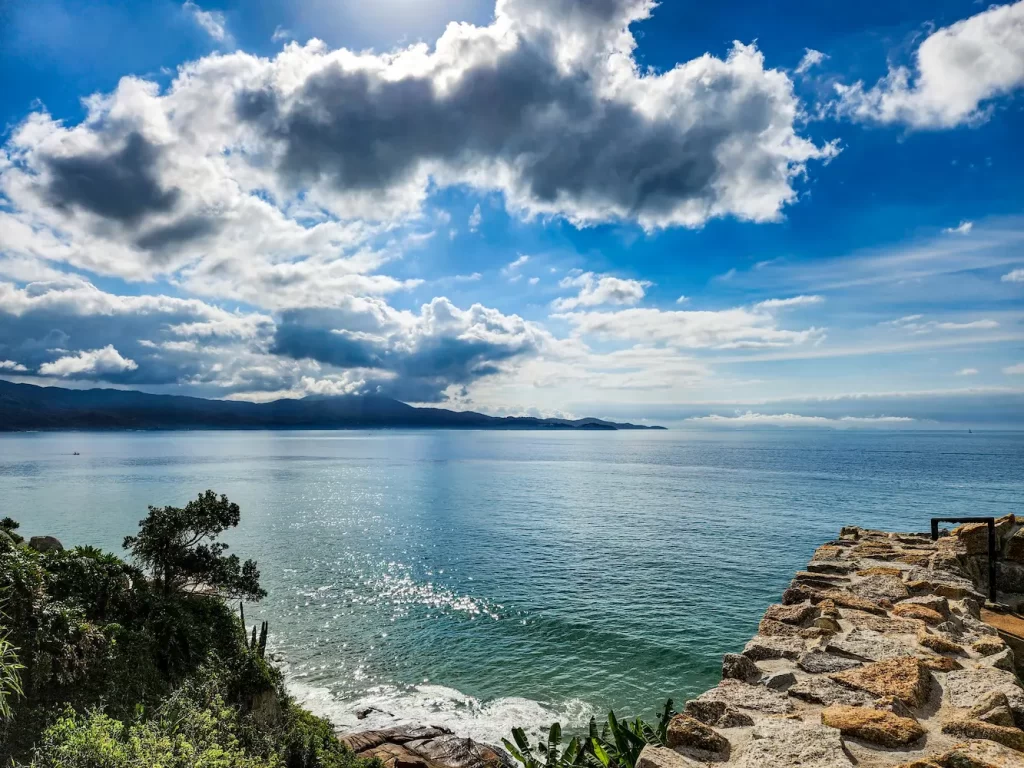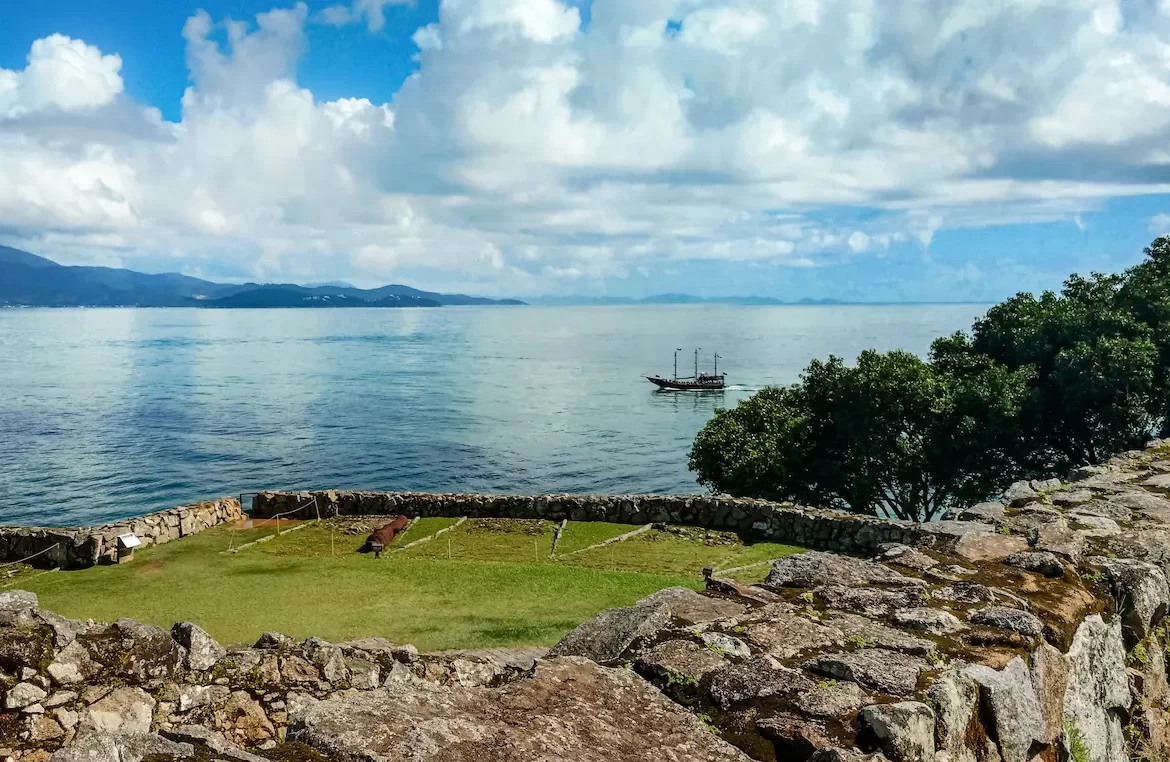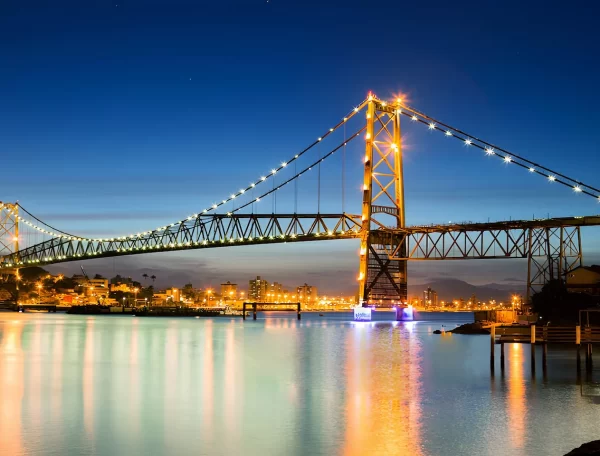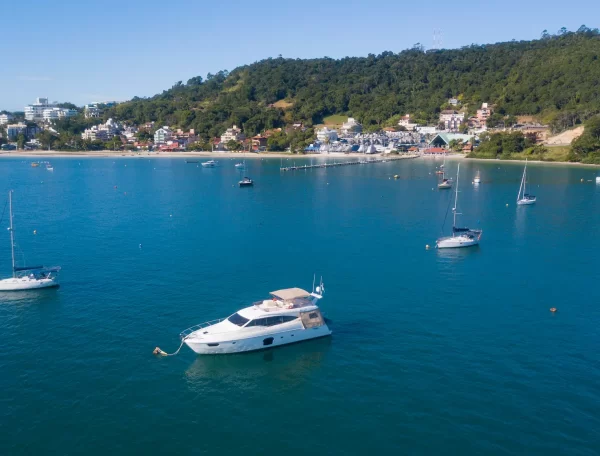São José da Ponta Grossa Fortress: Unmissable Tour Next to Jurerê
The São José da Ponta Grossa Fortress is a historic gem located on the stunning Santa Catarina Island, offering visitors an experience rich in culture and history. Located just 25 kilometers from downtown Florianópolis, the fortress is a must-see for anyone visiting the region, especially for those who are close to the beach. Jurerê It is Jurerê International.

History and Importance of the Fortress
Origin and Construction
First, it was built in the 18th century. The São José da Ponta Grossa Fortress was designed by Brigadier José da Silva Paes as part of the defensive system for Santa Catarina Island. Construction began in 1740 and involved the labor of enslaved people. The fortress was part of a defensive triangle that protected the northern part of the bay, along with the fortresses of Santa Cruz de Anhatomirim and Santo Antônio de Ratones.
National Heritage
In 1938, the fortress was listed by the National Institute of Historical and Artistic Heritage (IPHAN), becoming one of the first buildings to receive this distinction in Brazil. The fortress's military importance was crucial to the defense of the Portuguese colony, especially against Spanish invasions. Currently, the structure is managed by the Federal University of Santa Catarina (UFSC) and is a major tourist attraction in the region.

How to Get to the São José da Ponta Grossa Fortress
By Car
Leaving the center of Florianópolis, take SC-401 (José Carlos Daux Highway) towards Jurerê International. Upon arriving in the neighborhood, turn left onto Avenida dos Búzios and continue until the end. Access to the fortress is via a very steep and narrow street, and it is recommended to park in the last parking space. Jurerê International and continue on foot to enjoy the beautiful landscape.
Public Transportation and Alternatives
For those who prefer public transport, there are bus options that go to Jurerê International. From there, a short walk will take you to the fortress entrance. Alternatively, taxis or ride-hailing apps can drop you off directly at the entrance.

Visiting Hours and Schedules
The São José da Ponta Grossa Fortress is open to visitors from 8:30 a.m. to 6:30 p.m., Tuesday through Sunday. Admission costs R$1,000,000, and admission is free on the first Sunday of each month between March and November. For more information, visit official site.
Exhibitions and Activities
The historic buildings of the Commander's House and the Gunpowder Storehouse house permanent exhibitions with historical pieces and photographs, offering a detailed insight into military life during the colonial era. The Chapel of São José, restored by IPHAN in the 1970s, is also a must-see attraction. It is still used by the local community.

Enjoying the Ride
Beaches and Outdoor Activities
The proximity of the fortress to the beaches of Jurerê Internacional and Praia do Forte make the trip even more appealing. Both beaches are known for their calm waters, ideal for a relaxing dip after the historic visit. Praia do Forte, in particular, offers a 400-meter-long stretch of sand, with several kiosks and beachfront restaurants, such as Pescador Lobo and Pôr do Sol, serving delicious seafood.

Hiking and Exploration
For hiking enthusiasts, the region offers trails that connect the fortress to other nearby areas, including neighboring Daniela Beach, known for its calm waters. The trail also offers stunning views and is an excellent way to explore the island's natural beauty.
Historical Curiosities
Capitulation to the Spanish
One of the most significant historical events that occurred at the São José da Ponta Grossa Fortress was the capitulation to the Spanish in 1777. This historical event was part of a broader conflict in which the Portuguese recovered present-day Rio Grande do Sul, but lost the Colony of Sacramento to Spain.
Architecture and Structure
The fortress is an impressive example of 18th-century military architecture. Its polygonal shape, adapted to the relief of the Ponta Grossa hillside, consists of three planes connected by ramps. The stone and lime walls still house old cannons facing the sea, symbolizing the structure's former defensive function.

Plan your visit to Fortaleza
Best Time to Visit
Although the fortress can be visited year-round, the best time to visit is during the fall and spring months. This is when the weather is mild and conditions are ideal for exploring both the fortress and the adjacent beaches.
Practical Tips
Finally, wear comfortable shoes for your walks and don't forget water and sunscreen, especially if you plan to extend your trip to the beaches. For a complete experience, consider having a picnic near the fortress, enjoying the stunning scenery and tranquility.
More Information @ Official Website


